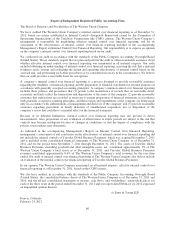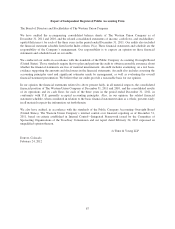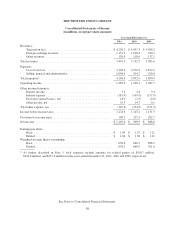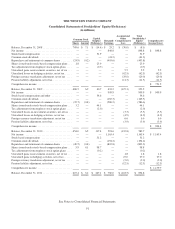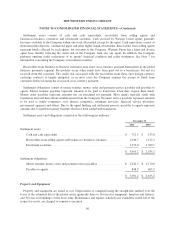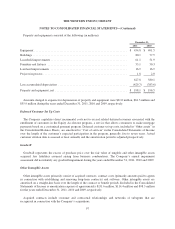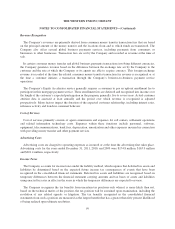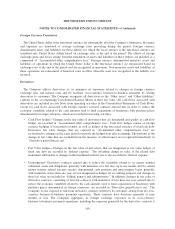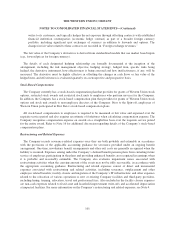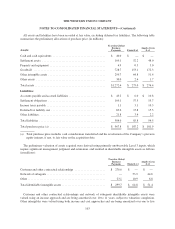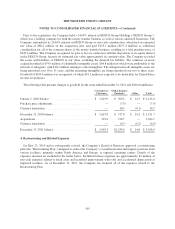Western Union 2011 Annual Report Download - page 102
Download and view the complete annual report
Please find page 102 of the 2011 Western Union annual report below. You can navigate through the pages in the report by either clicking on the pages listed below, or by using the keyword search tool below to find specific information within the annual report.THE WESTERN UNION COMPANY
NOTES TO CONSOLIDATED FINANCIAL STATEMENTS—(Continued)
Business Combinations
The Company accounts for all business combinations where control over another entity is obtained using the
acquisition method of accounting, which requires that most assets (both tangible and intangible), liabilities
(including contingent consideration), and remaining noncontrolling interests be recognized at fair value at the
date of acquisition. The excess of the purchase price over the fair value of assets less liabilities and
noncontrolling interests is recognized as goodwill. Certain adjustments to the assessed fair values of the assets,
liabilities, or noncontrolling interests made subsequent to the acquisition date, but within the measurement
period, which is one year or less, are recorded as adjustments to goodwill. Any adjustments subsequent to the
measurement period are recorded in income. Any cost or equity method interest that the Company holds in the
acquired company prior to the acquisition is remeasured to fair value at acquisition with a resulting gain or loss
recognized in income for the difference between fair value and existing book value. Results of operations of the
acquired company are included in the Company’s results from the date of the acquisition forward and include
amortization expense arising from acquired intangible assets. The Company expenses all costs as incurred related
to or involved with an acquisition in “Selling, general and administrative” expenses.
Cash and Cash Equivalents
Highly liquid investments (other than those included in settlement assets) with maturities of three months or
less at the date of purchase (that are readily convertible to cash) are considered to be cash equivalents and are
stated at cost, which approximates market value.
The Company maintains cash and cash equivalent balances with various financial institutions, including a
substantial portion in money market funds. The Company limits the concentration of its cash and cash
equivalents with any one institution. The Company regularly reviews investment concentrations and credit
worthiness of these institutions, and has relationships with a globally diversified list of banks and financial
institutions.
Allowance for Doubtful Accounts
The Company records an allowance for doubtful accounts when it is probable that the related receivable
balance will not be collected based on its history of collection experience, known collection issues, such as agent
suspensions and bankruptcies, and other matters the Company identifies in its routine collection monitoring. The
allowance for doubtful accounts was $28.5 million and $21.1 million as of December 31, 2011 and 2010,
respectively, and is recorded in the same Consolidated Balance Sheet caption as the related receivable. During
the years ended December 31, 2011, 2010 and 2009, the provision for doubtful accounts (bad debt expense)
reflected in the Consolidated Statements of Income was $24.3 million, $19.1 million and $36.2 million,
respectively.
Settlement Assets and Obligations
Settlement assets represent funds received or to be received from agents for unsettled money transfers, money
orders and consumer payments. The Company records corresponding settlement obligations relating to amounts
payable under money transfers, money orders and consumer payment service arrangements. Settlement assets
and obligations also include amounts receivable from and payable to businesses for the value of customer cross-
currency payment transactions related to the global business payments segment.
95



